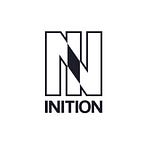Democratising Creativity: Multi-Sensory Technologies & VR
I can still remember the motion sickness from riding a roller coaster on the Oculus Rift back in 2013. It’s crazy to think how far VR has come in just a few years. Now the global AR and VR market is expected to grow to $209.2 billion by 2022. Quality is going up, costs are coming down. VR is maturing, as well as its applications as a common tool in marketing and business, not just a new medium of entertainment and thankfully the days of motion sickness appear to be behind us.
Currently we are on the brink of its next evolution, which has less to do with what we see and hear in VR, and more to do with what we smell, taste, and feel. Innovations in multi-sensory technology are giving us new tools that we can bolt onto VR that trick the brain into even richer engagement.
Trending AR VR Articles:
1. Infographic: The Future of Virtual Reality
2. Five Augmented Reality Uses That Solve Real-Life Problems
3. Expert View: 3 ways VR is transforming Learning & Development
4. Virtual Reality Headsets: What are the Options? Which is Right For You?
Nothing takes you out of a VR experience faster than reaching out to touch something and accidentally punching your mate in the face. But the impulse to touch is natural, and one that is possible with haptic technology. Haptics provide virtual touch sensation, allowing you to feel virtual objects, often by wearing a glove, vest or bodysuit, or through controllers that vibrate and convey tension. Adding another thing to put on and take off can add more friction for users however.
Bristol based Ultrahaptics has developed a breakthrough haptic technology that uses ultrasound to create tactile sensations in mid-air that can be felt (but not seen) creating invisible controls, objects, shapes and textures with no need to physically touch anything at all.
“It’s almost self-evident that adding the sensation of touch into immersive experiences will increase users’ sense of presence. Until relatively recently, the technology was holding us back. Now that’s changing, dramatically,” says Robert Blenkinsop, VP Product at Ultrahaptics. Their latest innovation, STRATOS Inspire, will be featured from May at the Inition Insight Studio in London where people will get to experience the impact of incorporating this interactive technology into virtual reality and digital advertising.
Perhaps a couple years from now we’ll be remembering when Feelreal was first Kickstarted, as it is currently live on the platform. When I first saw the mask that completely covers the whole face, I have to admit, I thought it was a joke, but it is Feelreal. The multi-sensory mask can be attached to any headset, simulating smell, heat, wind, vibration, mist, and even punches…for those of you who are into that kind of thing. Funded within one hour, it claims that because smell and taste are so closely linked, this is the closest you can get to virtual taste as well. Supported by YouTube VR and popular games like Beat Saber, units are set to ship in August 2019, and I’m actually looking forward to erm…the full facial experience?
Even location based entertainment is going multi-sensory. A new ‘barcade’ for VR has opened in London called Otherworld that features Immersion Rooms. There you can feel the heat of the sun on your face or the wind in your hair while playing VR with your friends. ‘A playground for the senses,’ it features sixteen VR experiences that people can do while eating and drinking with their friends.
By including other senses into virtual experiences we will start to see a new future of possibilities emerge. From spending more time inside VR, to creating new genres of entertainment, the effect may even rewire our brains. For instance, synesthesia (which is an area I’ve personally been researching and experimenting with) is something we are all born with but tend to lose once we begin communicating. Often linked to creative genius, it’s my hypothesis that VR has the potential to unlock this dormant part of our brains. Combined with multi-sensory technologies, this could accelerate the rewiring process, democratising creativity for everyone. I’m looking forward to continuing experimenting in this area in the future.
Now that the credibility of VR has been established, the fun part can begin. If you’re interested in experiencing the power of multi-sensory combined with VR and digital signage for yourself, register your interest to come to a personal demo of Ultrahaptics’ STRATOS Inspire at the Inition Insight Studio at: events@inition.co.uk
